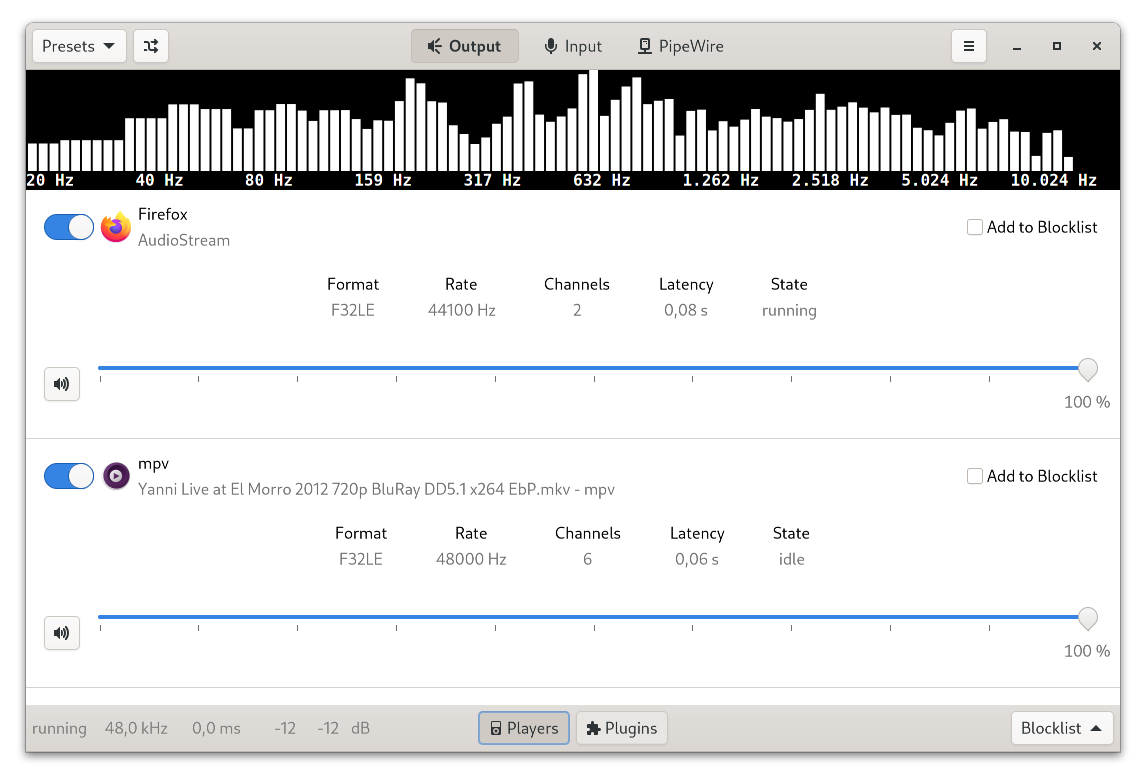Been some time since my last update, so I felt it was time to flex my blog writing muscles again and provide some updates of some of the things we are working on in Fedora in preparation for Fedora Workstation 35. This is not meant to be a comprehensive whats new article about Fedora Workstation 35, more of a listing of some of the things we are doing as part of the Red Hat desktop team.
NVidia support for Wayland
One thing we spent a lot of effort on for a long time now is getting full support for the NVidia binary driver under Wayland. It has been a recurring topic in our bi-weekly calls with the NVidia engineering team ever since we started looking at moving to Wayland. There has been basic binary driver support for some time, meaning you could run a native Wayland session on top of the binary driver, but the critical missing piece was that you could not get support for accelerated graphics when running applications through XWayland, our X.org compatibility layer. Which basically meant that any application requiring 3D support and which wasn’t a native Wayland application yet wouldn’t work. So over the last Months we been having a great collaboration with NVidia around closing this gap, with them working closely with us in fixing issues in their driver while we have been fixing bugs and missing pieces in the rest of the stack. We been reporting and discussing issues back and forth allowing us a very quickly turnaround on issues as we find them which of course all resulted in the NVidia 470.42.01 driver with XWayland support. I am sure we will find new corner cases that needs to be resolved in the coming Months, but I am equally sure we will be able to quickly resolve them due to the close collaboration we have now established with NVidia. And I know some people will wonder why we spent so much time working with NVidia around their binary driver, but the reality is that NVidia is the market leader, especially in the professional Linux workstation space, and there are lot of people who either would end up not using Linux or using Linux with X without it, including a lot of Red Hat customers and Fedora users. And that is what I and my team are here for at the end of the day, to make sure Red Hat customers are able to get their job done using their Linux systems.
Lightweight kiosk mode
One of the wonderful things about open source is the constant flow of code and innovation between all the different parts of the ecosystem. For instance one thing we on the RHEL side have often been asked about over the last few years is a lightweight and simple to use solution for people wanting to run single application setups, like information boards, ATM machines, cash registers, information kiosks and so on. For many use cases people felt that running a full GNOME 3 desktop underneath their application was either to resource hungry and or created a risk that people accidentally end up in the desktop session. At the same time from our viewpoint as a development team we didn’t want a completely separate stack for this use case as that would just increase our maintenance burden as we would end up having to do a lot of things twice. So to solve this problem Ray Strode spent some time writing what we call GNOME Kiosk mode which makes setting up a simple session running single application easy and without running things like the GNOME shell, tracker, evolution etc. This gives you a window manager with full support for the latest technologies such as compositing, libinput and Wayland, but coming in at about 18MB, which is about 71MB less than a minimal GNOME 3 desktop session. You can read more about the new Kiosk mode and how to use it in this great blog post from our savvy Edge Computing Product Manager Ben Breard. The kiosk mode session described in Ben’s article about RHEL will be available with Fedora Workstation 35.
high-definition mouse wheel support
A major part of what we do is making sure that Red Hat Enterprise Linux customers and Fedora users get hardware support on par with what you find on other operating systems. We try our best to work with our hardware partners, like Lenovo, to ensure that such hardware support comes day and date with when those features are enabled on other systems, but some things ends up taking longer time for various reasons. Support for high-definition mouse wheels was one of those. Peter Hutterer, our resident input expert, put together a great blog post explaining the history and status of high-definition mouse wheel support. As Peter points out in his blog post the feature is not yet fully supported under Wayland, but we hope to close that gap in time for Fedora Workstation 35.

Mouse with HiRes scroll wheel
PipeWire
I feel I can’t do one of these posts without talking about latest developments in PipeWire, our unified audio and video server. Wim Taymans keeps working with rapidly growing PipeWire community to fix issues as they are reported and add new features to PipeWire. Most recently Wims focus has been on implementing support for S/PDIF passthrough support over both S/PDIF and HDMI connections. This will allow us to send undecoded data over such connections which is critical for working well with surround sound systems and soundbars. Also the PipeWire community has been working hard on further improving the Bluetooth support with bluetooth battery status support for head-set profile and using Apple extensions. aptX-LL and FastStream codec support was also added. And of course a huge amount of bug fixes, it turns out that when you replace two different sound servers that has been around for close to two decades there are a lot of corner cases to cover :). Make sure to check out two latest release notes for 0.3.35 and for 0.3.36 for details.

EasyEffects is a great example of a cool new application built with PipeWire
Privacy screen
Another feature that we have been working on as a result of our Lenovo partnership is Privacy screen support. For those not familiar with this technology it is basically to allow you to reduce the readability of your screen when viewed from the side, so that if you are using your laptop at a coffee shop for instance then a person sitting close by will have a lot harder time trying to read what is on your screen. Hans de Goede has been shepherding the kernel side of this forward working with Marco Trevisan from Canonical on the userspace part of it (which also makes this a nice example of cross-company collaboration), allowing you to turn this feature on or off. This feature though is not likely to fully land in time for Fedora Workstation 35 so we are looking at if we will bring this in as an update to Fedora Workstation 35 or if it will be a Fedora Workstation 36 feature.
Penny

Zink inside the penny
As most of you know the future of 3D graphics on Linux is the Vulkan API from the Khronos Group. This doesn’t mean that OpenGL is going away anytime soon though, as there is a large host of applications out there using this API and for certain types of 3D graphics development developers might still choose to use OpenGL over Vulkan. Of course for us that creates a little bit of a challenge because maintaining two 3D graphics interfaces is a lot of work, even with the great help and contributions from the hardware makers themselves. So we been eyeing the Zink project for a while, which aims at re-implementing OpenGL on top of Vulkan, as a potential candidate for solving our long term needs to support the OpenGL API, but without drowning us in work while doing so. The big advantage to Zink is that it allows us to support one shared OpenGL implementation across all hardware and then focus our HW support efforts on the Vulkan drivers. As part of this effort Adam Jackson has been working on a project called Penny.
Zink implements OpenGL in terms of Vulkan, as far as the drawing itself is concerned, but presenting that drawing to the rest of the system is currently system-specific (GLX). For hardware that already has a Mesa driver, we use GBM. On NVIDIA’s Vulkan (and probably any other binary stacks on Linux, and probably also like WSL or macOS + MoltenVK) we download the image from the GPU back to the CPU and then use the same software upload/display path as llvmpipe, which as you can imagine is Not Fast.
Penny aims to extend Zink by replacing both of those paths, and instead using the various Vulkan WSI extensions to manage presentation. Even for the GBM case this should enable higher performance since zink will have more information about the rendering pipeline (multisampling in particular is poorly handled atm). Future window system integration work can focus on Vulkan, with EGL and GLX getting features “for free” once they’re enabled in Vulkan.
3rd party software cleanup
Over time we have been working on adding more and more 3rd party software for easy consumption in Fedora Workstation. The problem we discovered though was that due to this being done over time, with changing requirements and expectations, the functionality was not behaving in a very intuitive way and there was also new questions that needed to be answered. So Allan Day and Owen Taylor spent some time this cycle to review all the bits and pieces of this functionality and worked to clean it up. So the goal is that when you enable third-party repositories in Fedora Workstation 35 it behaves in a much more predictable and understandable way and also includes a lot of applications from Flathub. Yes, that is correct you should be able to install a lot of applications from Flathub in Fedora Workstation 35 without having to first visit the Flathub website to enable it, instead they will show up once you turned the knob for general 3rd party application support.
Power profiles
Another item we spent quite a bit of time for Fedora Workstation 35 is making sure we integrate the Power Profiles work that Bastien Nocera has been working on as part of our collaboration with Lenovo. Power Profiles is basically a feature that allows your system to behave in a smarter way when it comes to power consumption and thus prolongs your battery life. So for instance when we notice you are getting low on battery we can offer you to go into a strong power saving mode to prolong how long you can use the system until you can recharge. More in-depth explanation of Power profiles in the official README.
Wayland
I usually also have ended up talking about Wayland in my posts, but I expect to be doing less going forward as we have now covered all the major gaps we saw between Wayland and X.org. Jonas Ådahl got the headless support merged which was one of our big missing pieces and as mentioned above Olivier Fourdan and Jonas and others worked with NVidia on getting the binary driver with XWayland support working with GNOME Shell. Of course this being software we are never truly done, there will of course be new issues discovered, random bugs that needs to be fixed, and of course also new features that needs to be implemented. We already have our next big team focus in place, HDR support, which will need work from the graphics drivers, up through Mesa, into the window manager and the GUI toolkits and in the applications themselves. We been investigating and trying out some things for a while already, but we are now ready to make this a main focus for the team. In fact we will soon be posting a new job listing for a fulltime engineer to work on HDR vertically through the stack so keep an eye out for that if you are interested in working on this. The job will be open to candidates who which to work remotely, so as long as Red Hat has a business presence in the country you live we should be able to offer you the job if you are the right candidate for us. Update:Job listing is now online for our HDR engineer.
BTW, if you want to see future updates and keep on top of other happenings from Fedora and Red Hat in the desktop space, make sure to follow me on twitter.


